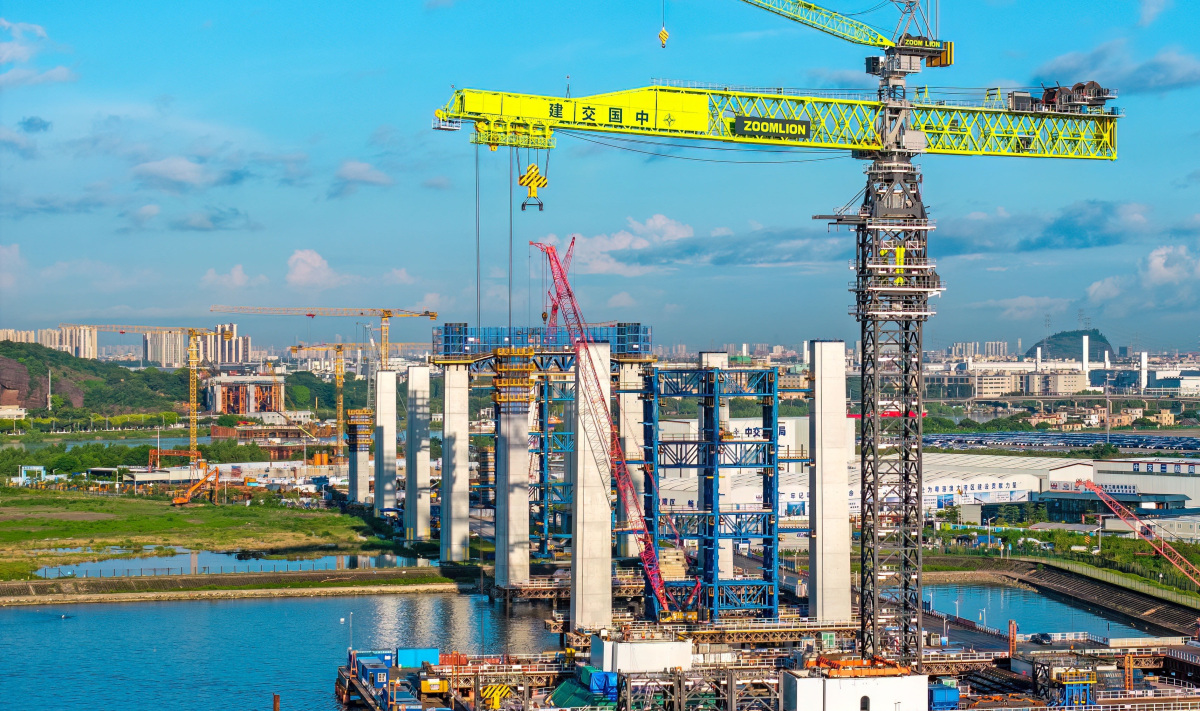
The Guangdong-Hong Kong-Macao Greater Bay Area's "super project," the Shenzhen-Zhongshan Link, saw over 720,000 vehicle crossings in its first week of operation, with an average daily traffic volume exceeding 100,000 vehicles and peak hours reaching 8,000 vehicles per hour, surpassing the popularity of the Nansha Bridge when it first opened. The acceleration of crossing channels over the Pearl River Estuary, from north to south, now includes the Huangpu Bridge, Nansha Bridge, Shiziyang Passageway, Humen Pearl River Bridge, Shenzhen-Zhongshan Link, Shenzhen-Zhuhai Passage, and Hong Kong-Zhuhai-Macao Bridge. Besides the planned Shenzhen-Zhuhai Passage, the Shiziyang Passageway is speeding up its construction, featuring an eight-lane dual carriageway and becoming the first double-deck crossing channel in the Pearl River Estuary.
While the highly anticipated Shenzhen-Zhongshan Link has just opened and experienced a surge in traffic, another "super channel" in the Greater Bay Area, the Shiziyang Passageway project, has achieved a new milestone. The west anchorage of the Shiziyang Bridge, weighing as much as 17 aircraft carriers, was recently successfully poured, marking the safe completion of the world's largest anchorage pit. The next phase will transition into core filling construction.
Shiziyang Passageway to Achieve Five "World Firsts"
Reporters noted that among the current crossing channels over the Pearl River Estuary, the design of the Shiziyang Passageway stands out. It features an eight-lane dual carriageway with a "double-deck bridge" scheme for the river crossing section, making it the first double-deck river crossing channel in the Pearl River Estuary. The passage is expected to be completed and open to traffic by the end of 2028, marking another leap in China's bridge construction in terms of span and scale.
According to the plan, the upper deck of the Shiziyang Passageway's "double-deck bridge" will connect to the expressway network, while the lower deck will connect to the urban trunk road network. This design allows vehicles to be distributed across two levels, reducing traffic congestion and accident risks in the Pearl River Estuary. As the economic development and high land utilization on both sides of the estuary increase, selecting interfaces for river crossings becomes more challenging. The double-deck design can reduce land occupation, benefiting environmental protection and energy conservation.
It is also noteworthy that the Shiziyang Bridge, a critical control project of the Shiziyang Passageway, adopts a scheme with a main span of 2,180 meters using a double-deck steel truss suspension bridge, crossing the river in one span. It is one of the most technically challenging and complex bridges in the world, setting five world records in double-deck suspension bridges: main span length, number of lanes, height of main towers, anchorage foundation, and main cable scale.

Building a 100-Kilometer "Golden Inner Bay" Around the Pearl River Estuary
The Shiziyang Passageway is located between the Nansha Bridge and the Humen Pearl River Bridge, directly connecting Guangzhou and Dongguan, two megacities with permanent populations exceeding 10 million each. It will improve the traffic flow structure between the eastern and western banks of the Pearl River in Guangzhou's Nansha and Dongguan. To the west, it will also connect cities like Zhongshan, Foshan, and Jiangmen, integrating the western Pearl River urban agglomeration with Dongguan, the "world's factory," and accelerating the construction of the Greater Bay Area's "one-hour living circle."
Reporters believe that once completed, the Shiziyang Passageway will not only alleviate the traffic pressure on the Humen Pearl River Bridge, Nansha Bridge, and other crossing channels but also meet the growing traffic demand between the eastern and western banks of the Pearl River Estuary. It will open a new significant channel for the integrated development of both banks, promoting economic and social development along the project's route. Additionally, the Shiziyang Passageway will reserve ample transportation space for the future development of the Greater Bay Area.
As the high-quality integrated development of the Pearl River Delta in the Greater Bay Area accelerates, the construction of a 100-kilometer "Golden Inner Bay" around the estuary is underway. Experts predict that by 2050, the total population of the Greater Bay Area is expected to reach 120 to 140 million, nearly doubling from the current population of approximately 70 million. Upon completion, the Shiziyang Passageway, together with other crossing channels, will form a one-hour transportation circle between major cities in the Greater Bay Area, achieving integrated connectivity between cities on both banks and significantly contributing to the high-quality development of the Guangdong-Hong Kong-Macao Greater Bay Area.




















Comment